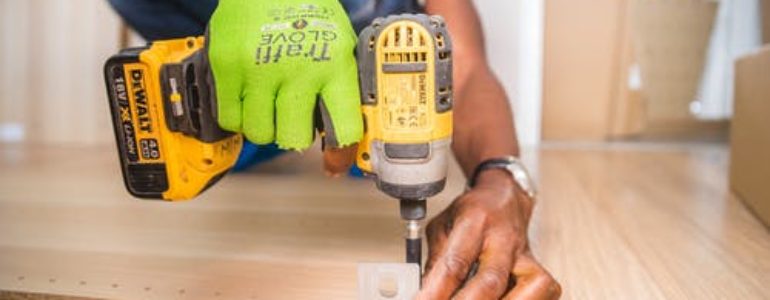A mirrored bathroom cabinet is a simple, cheap addition to another bathroom furniture or toilet package that can boost the sense of space and light in the room, provide you with a handily located mirror for shaving or applying make-up, and adapt your medications, beauty products or other odds and ends.
Installing a cabinet on your wall sounds simple, but can it be?
Think about where you want the cabinet to be situated. Above the basin is a popular spot, if you’ve opted for bathroom furniture with a mirrored door; above the toilet is just another location where you could make the most of otherwise wasted wall area. Consider who will be using the cabinet (and when there are any kids whose access you want to limit) when deciding on the best location and height for your cupboard.
The first stage is measuring. This stage is important to your eventual success: in case you don’t measure accurately, you may need to drill more than once, and you can also realize that your cupboard, once secured onto the wall, doesn’t hang quite straight. So step, then double check your measurements. Hold, or ask a helper to hold, the cupboard in its correct place on the wall. Use a spirit level to get the cabinet exactly right, then draw a pencil line across the top. This line is going to be hidden from sight when the cabinet is set up if you are matching the bathroom furniture so that its top is above eye level.
Measure from the top of the cupboard down to the fixing holes. If your cabinet hasn’t yet been provided complete with pre-drilled fixing holes, then you will want to drill these yourself, strengthening the cupboard if necessary to be certain the holes don’t split with the burden of both cabinet and materials once the cupboard is fixed in place; most stores bought bathroom furniture is provided pre-drilled to make fitting easier for the customer, however. Assess the distance between fixing holes, too. All of your measurements should choose the center of the adjusting hole (not the edge) as the point to which you quantify.
Next, measure down from the top line on your wall into the degree of the fixing holes. Mark the wall at this point, and quantify horizontally together this new line to be sure your adjusting hole marks are in the correct place, both in connection with each other and in relation to surrounding things. If you want your cabinet to be above your basin, in the middle of the space available, then assess the space from side to side, find the centre point, and measure an appropriate amount on both sides of the centre to indicate your repairing holes, to ensure the center of your cupboard will hang in the center of the distance. Don’t presume that pre-drilled repairing holes will be equidistant from the center of the toilet furniture – check! Kitchen Cabinets Calgary – Cabinet Solutions
Now it is time to fasten fixings in your wall from which to hang the cabinet. You’ll need to use another technique for repairing bathroom furniture onto a plaster and masonry walls, a stud wall, and also a sterile lined wall.
On a masonry (brick or blockwork) wall, covered with plaster, so ensure that you use adequately long screws so that the wall rather than the plasterwork, supports the weight of the bathroom furniture. Drill your pockets, fit wall plugs, then screw in the wall plugs: this should offer a firm mount ordinarily. Attempt to ensure, if you can, that you drill to bricks or blocks rather than to the mortar between these, which will be softer and less supportive. Drill carefully into blockwork, which is often thicker than brick, to prevent over expanding the holes, and utilize special wall sockets for this kind of wall.
Stud walling is plasterboard fixed to vertical timber supports (or studs). Fixings to your bathroom furniture have to be screwed to the studs as plasterboard alone won’t be powerful enough to support the weight of the cupboard. Find the place of the studs by tapping on the wall: the area together with all the stud behind it will sound solid while other areas of the wall will probably sound hollow as you tap. The screws may be adjusted to the wall right; no wall plugs are wanted. Click here to know more!
Dry lining walls are walls in which the plasterboard is adjusted to the blockwork wall with blobs of adhesive so that it moves out from the surface of the blockwork. Cutting out a small part of plasterboard round each repairing hole and halfway via a wooden’spacer’, slotted into this gap, in the wall behind implies that behind the screw you’ll have a secure base of solid wood against strong blockwork that will encourage the screw as it holds the weight of your toilet furniture. If you did not do so, the burden of the cabinet could cause the unsupported surface to deform. When the cabinet is hung on the wall, then you won’t have the ability to see any of the modifications you have made into the wall.
If your toilet wall is tiled, then you will need to be extra cautious as you drill the holes to fix your toilet furniture into the wall. Your drill bit needs to be powerful: either a carbide tipped masonry drill bit or a diamond-tipped drill bit will probably be most suitable for tile. The hard, glazed outer surface of the tile creates beginning to drill the trickiest part. Consider scoring an X in the tile to provide you more surface traction to begin. Drill slowly, building up speed as you move but bearing in mind that persistence, not brute power, is the secret to dull through tile without cracking it. Use cold water to lubricate the cover of the drill bit and keep it from overheating if your tiles are thick or hard. When both tile and wall have been drilled through, add your wall plugs as essential. Make sure that the wall plug is completely in the walls so that only the unthreaded top part of this screw sits in the tile: any expansion of this wall plug from the drilled part of tile could create the tile to crack. https://www.cabinetsolutions.com/kitchen-cupboards.aspx









